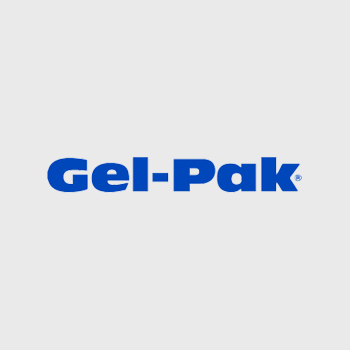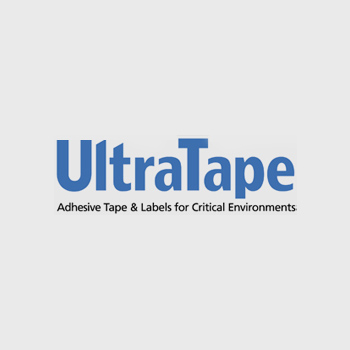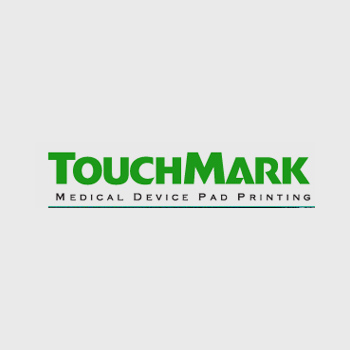Blog

Protecting the Future: How Gel-Pak Safeguards Google’s Willow Quantum Computing Chip
01/08/25 Read MoreSenate Votes to Advance Bill to Subsidize U.S.-Made Semiconductor Chips
07/26/2022 Read MoreJeanne Beacham Viewpoint 2021
Delphon CEO, Jeanne Beacham shares her thoughts about semiconductor and microelectronic industry trends for 2021.
01/14/2021 Read MoreChip Industry Dodges Direct Impact of Coronavirus
The semiconductor industry appears to have escaped the direct impact of the coronavirus crisis so far, but the market is likely to suffer the repercussions as the outbreak slows or suspends production among electronics manufacturers, according to Omdia.
02/19/2020 Read MoreChina Has Always Trailed the U.S. in Chipmaking. In the Trade War Era, Will It Finally Catch Up?
Many tech companies are caught in the crossfire of the escalating trade and tech wars between China and the U.S. What are the fundamental issues that are dividing the two superpowers?
11/19/2019 Read MoreEngineers: 5G, connected cars and AI will greatly impact semiconductors in the next 3 years
There are a number of new technologies on the horizon that will influence the semiconductor industry in the next three years. But according to a new survey of engineers by Advanced Energy, the ....
04/10/2019 Read MoreSemiconductor Slowdown Scare Could Be Shortsighted
Taiwan Semiconductor's (TSM) poor forecast to kick of 2019 threatened to sink semiconductor stocks lower on Thursday, but analysts and investors are still standing by their long term value...
01/17/2019 Read MoreGallium Nitride Enabling IoT Revolution, Cellular 5G, Optoelectronics, and Sensors.
GaN is a semiconductor material that can amplify high power radio frequency signals efficiently at microwave frequencies to enhance a system’s range....
10/30/2018 Read More5G: What is it good for?
5G, or 5th generation mobile, is the next big leap in wireless communications. You’ve probably heard about it in commercials or seen it in headlines. ...
06/29/2018 Read MoreGartner Says Worldwide Semiconductor Revenue Forecast to Grow 7.5 Percent in 2018
Worldwide semiconductor revenue is forecast to total $451 billion in 2018, an increase of 7.5 percent from $419 billion in 2017...
02/12/2018 Read MoreFlexible, Stretchable Photonic Devices Developed
Researchers at MIT and several other institutions have developed a method for making photonic devices - similar to electronic devices...
02/07/2018 Read MoreHow to Bring Flexibility to Wearable Design
Micro-Electro-Mechanical Systems (MEMS) are more prevalent than ever, especially in the popular configurations known today as “wearables.”
05/02/2017 Read MoreWireless Medical Microcoil for Treatment of Stroke
Developing and Evaluating a Flexible Wireless Microcoil Array Based Integrated Interface for Epidural Cortical Stimulation...
05/02/2017 Read MoreAnnual Laser Market Review & Forecast: Where have all the lasers gone?
Laser companies both small and large are feeling the recent surge of techsector M&A activity. Whether a timetomarket or portfolio expansion play, the details reveal much about where the laser industry is headed in the next decade—notwithstanding surprises related to Brexit or U.S. elections...
01/23/2017 Read MoreA sticky but helpful situation for fragile medical devices
One stop on our Packaging Innovation Tour at MD&M Minneapolis 2016 was Gel-Pak, a company offering a biocompatible gel that can be coated onto the bottom of boxes, trays, slides, and films to secure medical components in place during transport, processing, and storage. scanners and...
01/20/2017 Read MoreGlobal Photonics Market Set for Growth
ALBANY, N.Y., Nov. 14, 2016 — The global photonics market is set to reach $766 billion by 2020, according to a new report from Transparency Market Research...
11/14/2016 Read MoreWearables: The Next Big Technology Trend?
With technology seeping deeper and deeper into our daily lives, the future of smart "wearables" looks bright. Wearables is a common term for devices or technology with features like scanners and...
09/13/2016 Read MoreThe Dreaded Anti-Static Zone
Triboelectric Charge Generation is caused by the separation of materials. Charge generation can be caused by...
04/06/2016 Read MoreSemiconductor Industry Demographic Changes 2016
In 2016 Semicondutor demand is expected to thrive in the Americas while it is expected to slow in Asia...
12/24/2015 Read MoreGel-Pak PF Film used in fabrication of two-dimensional graphene material
A research study produced by Kavli Institute of Nanoscience, Delft University of Technology, The Netherlands, explains the processes of transferring two-dimensional graphene material using Gel-Pak’s PF film.
11/17/2015 Read MoreTips for Handling and Storing GaAs and MMIC Components
GaAs and MMIC device manufacturers commonly use Gel-Pak VR carriers to handle and store their components.
10/30/2015 Read MoreGel-Pak PF Film Used for Semi-Automated Micro Assembly
Gel-Pak PF Film is used as an enabling material auto-assembly technique designed by UC Berkeley department of EECS.
09/30/2015 Read MoreUnderstanding EOS and ESD Failures in Semiconductor Devices
Static Electricity can be defined as stationary charge that builds up on the surface of a material. The interaction between stationary charges, known as electrostatics, leads to two key problems: electrostatic overstress (EOS) and electrostatic discharge (ESD).
07/30/2015 Read MoreGlobal Semiconductor Outlook 2020
The global semiconductor market has been experiencing a stimulating growth in recent times despite the industry suffering from a decline in revenue due to the economic downturn in 2010. Advancement in technology, emergences of mobile devices and consumer electronics, and new application areas are further expected to lead the global semiconductor market in the coming years.
05/20/2015 Read MoreThermal Slide debonding for High-yield Thin Wafer Results
Gel-Pak product helps increase yield of thin wafers... Thermal slide debonding represents the next significant advancement in obtaining high-yield thin wafer results. Initial detection of anomalies and cracks usually occurs during debonding; however, many causes for this damage originate during upstream bonding material coating, curing, bonding, and thinning processes. Moreover, only thermal separation tools that are highly precise and highly accurate will consistently render desirable process yields. The bonded pair is subjected to many thermal and compressive forces during processing and debonding. The thinned device layers are often very sensitive to outside factors including temperature, vacuum, and mechanical compression and release
04/30/2015 Read MoreCamera-guided Feeding of Optics in Robot-based Laser Assembly
Gel-Pak Vacuum Release Trays aid in part feeding optics in robot-based assembly process. This paper discusses the assembly of laser systems and the fact that a good share of the process must be completed manually due to the high degree of complexity involved in the alignment of the optics. Although some labs have demonstrated that it is possible to automate some of the assembly, it is not cost effective to do so, especially for lower volume laser production. This paper discusses a robot-based automated assembly station that eliminates some of the manual aspects of laser systems assembly. Gel-Pak products are used to secure and help transfer the optical components during the process.
03/04/2015 Read More
The Importance of Using Cleanroom Tape During Cleanroom Construction.
When constructing a cleanroom, maintaining a contamination-free environment...
09/06/2024 Read MoreGraphic Overlays: Things to know when selecting materials and finish options.
Selecting the substrate for the graphic overlay is a key part of the product ...
11/16/2018 Read MoreGlobally Harmonized System (GHS)
The Globally Harmonized System (GHS) was established to create...
10/30/2018 Read MoreFloor Marking Is Used to Identify Walkways
Floor marking is used to identify walkways, aisles or other spaces in a facility...
08/03/2018 Read MoreManufacturers are instituting protections throughout the supply chain.
The counterfeit drug market is growing rapidly, and Deloitte accountants currently value it between $75 billion to $200 billion according to data culled from Pharmaceutical...
06/28/2018 Read MoreAdhesive Considerations
In addition to caring for the sick, today's medical providers are also heavily focused on prevention, patient education, and health and...
06/21/2018 Read MoreCleanrooms: The Total Package
When the topic of cleanroom design is mentioned, one automatically thinks of the cleanroom classification requirements of ISO 14644...
02/07/2018 Read MoreCleanrooms Unlock Secrets of the Past
Cleanrooms are used for a number of applications — pharmaceuticals, aerospace, food and beverage, manufacturing, and more. You can also add “solving ancient mysteries” to that list.
07/06/2017 Read MoreParticle Testing for Cleanroom Forms and Labels
Whether your company is in the semiconductor, disk drive, pharmaceutical, or biotechnology industry, you have invested considerable time and money to ensure the yields and efficiency of your production processes.
05/30/2017 Read MoreThings to know about the successful use of Pressure Sensitive Adhesives
UltraTape Polyimide Label Materials are Compliant with REACH & RoHS Initiatives Set Forth for the Electronics Manufacturing Industry
05/02/2017 Read MoreVOC Emissions from Cleanroom Materials
In addition to particle generation due to mechanical stress, the outgassing behavior of materials considered suitable for use in cleanrooms is becoming an increasingly important factor.
12/2016 Read MoreThe Benefits of Antimicrobial Technology in Healthcare Facilities
Patient outcomes and staff safety are top priorities for hospitals. But harmful microbes such as E. Colli and MRSA make it difficult for medical facilities to protect...
07/19/2016 Read MoreThe Importance of Machinery Safety Labels
A Matter Of Risk Assessment, Liability & Compliance: Machine Safety Labeling In The 21St Century.
05/23/2016 Read MoreThe Importance of Designing the Industrial Control Panel Overlay
Original equipment manufacturers from all industries, including medical device manufacturing, heavy equipment, appliances and transportation, rely on the quality of their equipment’s graphic overlays to effectively communicate instructions, control markings and branding.
04/06/2016 Read MoreThe High Cost of Label Failure
Failure of a label to adhere, or to withstand the harsh conditions of the environment it is used in can have significant consequences.
04/06/2016 Read MoreTips for designing labels
These tips will help you produce labels that not only meet the needs of your application but will also effectively communicate your message.
01/01/2016 Read MoreThe importance of asset tags
Keeping track of your property, expensive equipment and other assets is a common challenge business owners everywhere face. This particular task can be very troublesome, especially without the proper knowledge and equipment needed to employ an effective asset management system.
12/1/2015 Read More19 Steps to better cleanroom construction
As the demand for complex cleanrooms in the life sciences grows, construction challenges mount. Making the right decisions during the building and commissioning phases of cleanrooms will help to ensure that they are successful, better integrated, more operable and sustainable.
11/1/2015 Read MoreCan your Employees Identify the Workplace hazards on the new oSHA Pictograms?
Employers are required to have trained workers on chemical Safety Data Sheets and labels as part of OSHA’s updated Hazard Communication Standard by now. Both new SDSs and labels feature pictograms, and workers must know what hazards these pictograms represent. Can you match the pictograms below with the corresponding hazards?
10/1/2015 Read MoreChoosing the right tape for the job
Tape adhesion is influenced by a number of factors and may adhere differently depending on what it is being applied to. Materials like metals and glass have high surface energy and tapes generally like to stick to them. Plastics, however have low surface energy and it is sometimes difficult for tapes to esablish a strong hold to them.
09/01/2015 Read More5 Tips for floor marking in frigid enviroments
The chill in the air is a good reminder that now is a good time to review the best practices when it comes to floor marking in frigid environments. Marking aisles and hazardous conditions can be a difficult task in cold storage facilities. Painting is discouraged because paint fumes and food storage don't mix. Additionally, freezing temperatures prevent paint from during and adhering to surfaces. Using common floor tapes also presents a problem because most of them require an application temperature of 55 F or above.
08/01/2015 Read MoreConforming to GHS (Globally harmonized System) of Classification and Labeling of Chemicals
Questions and answers regarding how to conform to the new GHS classification system.
11/1/2015 Read MoreThe Top 5 Ways Your Tape and Label Partner Can Boost Your Profits
Sourcing, specifying, and purchasing adhesive tapes and labels can be a daunting process. There are literally millions of different products to choose from, and finding the right one for your needs can be an intensive process. In many cases a specialty tape manufacturer with converting capabilities can be a great partner to help you find the correct tape, integrate it into your current processes, and even lower your total applied costs. As a bonus, by partnering with a tape and label specialist you can benefit from their expert knowledge and value-added services.
05/30/2015 Read MoreReduce time spent masking PCB's during wave solder process
The objective of an environmentally controlled cleanroom is to provide a contamination-free space in which to test and/or manufacture contamination-free products. Nonetheless, contamination has a way of unexpectedly occurring without any indication of its origin. Here are some hidden causes of contamination.
03/01/2015 Read MoreHidden Sources of Contamination in the Cleanroom
The objective of an environmentally controlled cleanroom is to provide a contamination-free space in which to test and/or manufacture contamination-free products. Nonetheless, contamination has a way of unexpectedly occurring without any indication of its origin.
01/12/2015 Read More
Meeting FDA Compliance Standards in printing Class I, Class II and Class III Devices
TouchMark’s expertise includes medical device pad printing in multiple categories of FDA classification.
04/10/2019 Read MoreIs FDA's Draft Guidance on Interoperable Devices Premature?
In January, FDA released a draft guidance with recommendations both for what device makers should think about when designing interoperable medical devices and for what to include in premarket submissions to the agency.
04/06/2016 Read MorePad Printing Vs. Screen Printing
Pad printing and screen printing are commonly used to mark medical and electronic devices. Read about the difference between the two.
01/11/2015 Read MoreTubings Constant Evolution
Medical tubing has evolved to be a complex, sophisticated product combining various materials, technologies and processes.
11/30/2015 Read MoreThe Importance of Medical Grade Inks
The United States Pharmacopoeia (USP) 30, NF 25, 2007 standard also known as Class VI is widely used to comply with stringent FDA rules for products that come in contact with the human body.
09/22/2015 Read MoreThe RX Factor: Medical Plastics and Adhesion
Although polymers have suffered through some tough media disparagement as of late (biodegradability issues) it is highly unlikely that these polymers are replaceable for medical device manufacturing. These specialized materials are indispensible for providing low cost but effective vehicles for delivering everything from successful operating techniques to therapeutic medicines.
08/01/2015 Read MorePad Printing on Textured Surfaces
Textures vary according to their individual depth, the degree of draft on the sidewalls, and the frequency of peaks and valleys for a given surface area. Some textures are more difficult to print successfully than others, and there are certain textures that are simply impossible to cover completely.
06/30/2015 Read MorePlasma Treatment for Medical Plastics
Many medical devices are made from medical grade plastics that typically have low surface energy. It is often necessary to modify the surface energy in order to guarantee the adhesion of any permanent markings as well as to improve device performance. By altering the surface properties, critical markings on devices such as catheters adhere better and they can slide and maneuver more easily within the body.
04/30/2015 Read MoreImportance of class VI inks for medical devices
Syringes, catheters, medical tubing – most of the time these medical devices are imprinted with markings that facilitate their use. Because they come in contact with the human body, both the substrate itself and the ink used to mark it are subject to standards issued by the United States Pharmacopeia (USP). USP is an official public standards authority for health care items that sets standards for the quality, purity, strength and consistency of medical products. For an ink used in pad printing a medical device to pass USP Class VI standards, it must exhibit a very low level of toxicity by passing all of these tests requirements.
03/27/2015 Read More